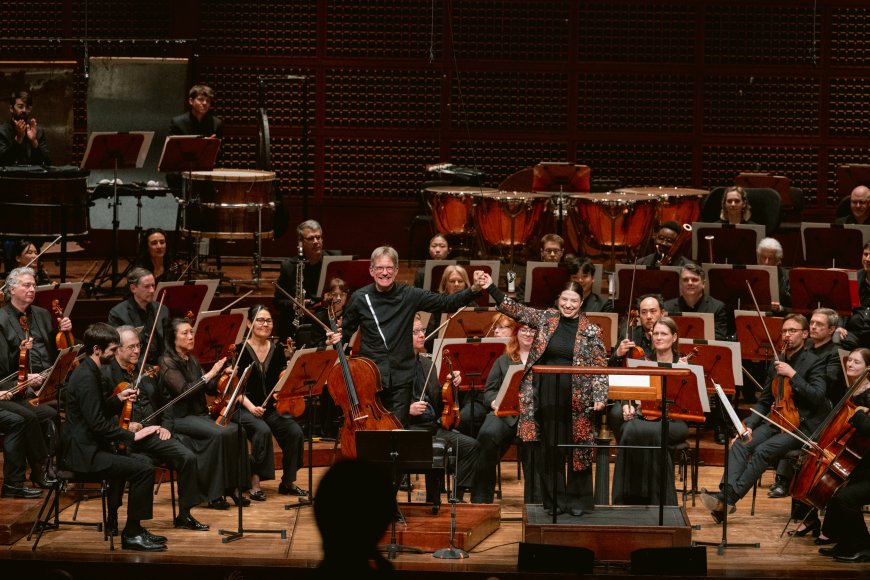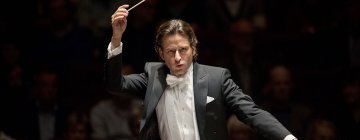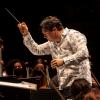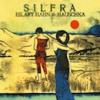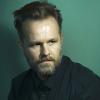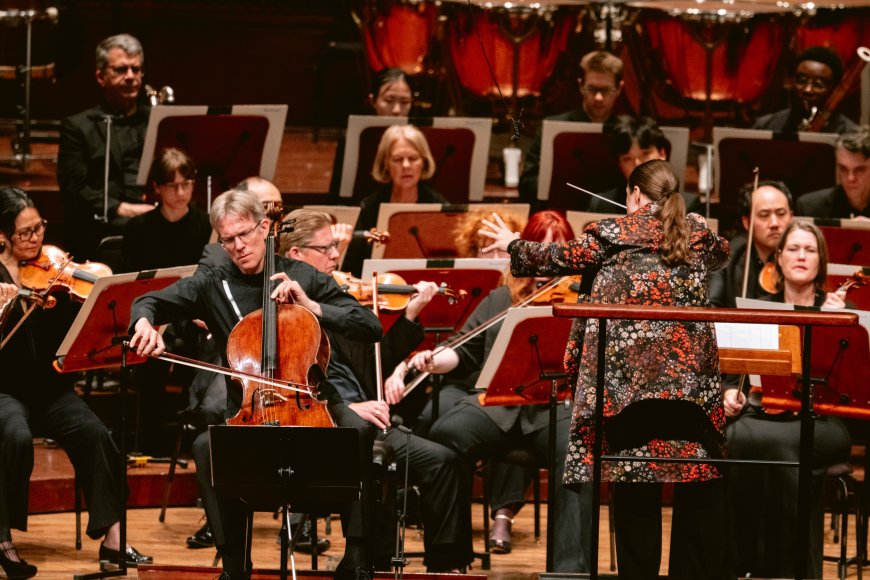
Icelandic composer Anna Thorvaldsdottir’s music rumbled through Davies Symphony Hall in May when the San Francisco Symphony presented the world premiere of her explosive cello concerto Before we fall.
Bay Area audiences will have another chance to hear Thorvaldsdottir’s mighty sonic world brought to life at the Cabrillo Festival of Contemporary Music when Catamorphosis receives its West Coast premiere from the Cabrillo Festival Orchestra under the baton of Music Director Cristian Măcelaru on Aug. 9. On the same program is Lou Harrison’s Concerto for Violin with Percussion Orchestra and the world premiere of Brooklyn-based composer Darian Donovan Thomas’ Flowercloud.
Catamorphosis (2020), is a dramatic, existential work that explores our relationship with the world around us. According to program notes on her website, the piece is “characterized by the orbiting vortex of emotions and the intensity that comes with the fact that if things do not change it is going to be too late, risking utter destruction — catastrophe.”
Thorvaldsdottir has been commissioned by many of the world's top orchestras, including the Berlin, New York and Los Angeles Philharmonics, but her work was once seldom played on Bay Area stages. That changed when conductor Esa-Pekka Salonen brought her Metacosmos to San Francisco in 2019 — after conducting its world premiere in New York the year before — as part of his first concert with the San Francisco Symphony after being named its music director designate.
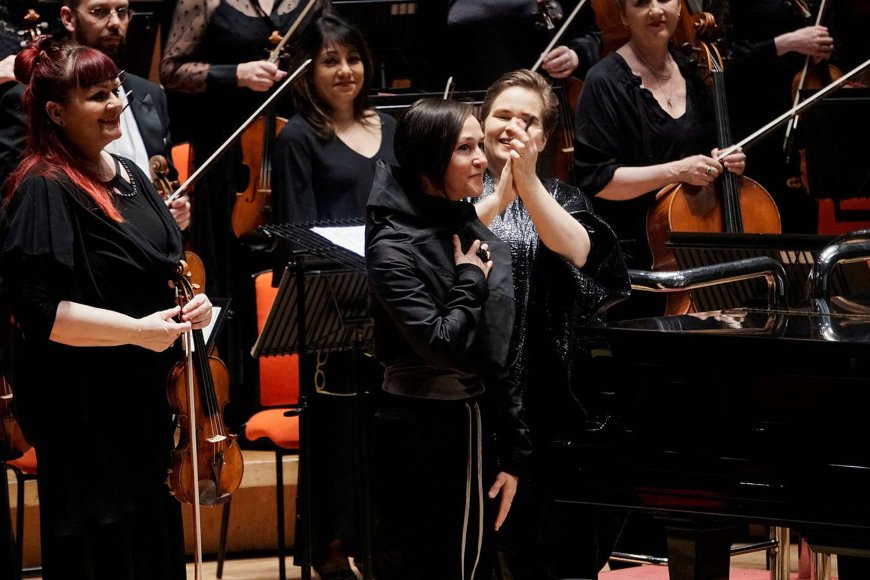
Thorvaldsdottir’s musical training began as a cellist. Later, she studied composition at the Iceland Academy for the Arts then moved out to California for four years to pursue a Ph.D. at the University of San Diego. “It was a wonderful place to be and a very creative environment,” she said. “And I've always loved coming back. California was so different from Iceland — that was the only place I'd lived before I moved — so it was spectacular.”
Thorvaldsdottir chatted with San Francisco Classical Voice via video call from her home in London to talk about her process and creative inspirations. This conversation has been edited for length and clarity.
You've written that the inspiration behind Catamorphosis was the fragile relationship we have to the Earth. Since you first wrote it, has your perspective changed?
I don't usually talk so explicitly about direct inspirations. But in this case, it was just such a big part of the overall aura and the urgency of the piece. How it moves and the battles it fights and also the hope that it attempts to show. I also just wanted to say, "Hey, this is what I was thinking about."
(But) inspiration is only the beginning and then it’s a lot of technical work about the music. So nobody needs to know anything. And they find something for themselves, ideally.
A few years ago, you said in an interview that you literally draw out the music before you put it into notation. How does that help with your process?
This is really a mnemonic device for me, because when the mind is starting to find the ideas and the aura and the atmosphere for each piece — lyricism, harmony, all these things that come together to be the music. It's so quick for me to draw it out. Sometimes it's words, sometimes it's very graphic, always very textual because it really depicts what it is that I'm hearing to remember the music.
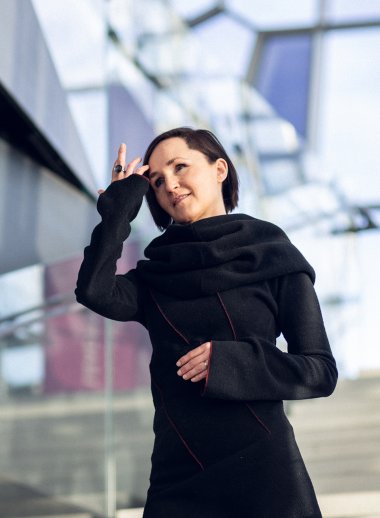
Do you ever forget a compositional idea prior to writing it down?
Well, probably, but never so that I've missed it. But the thing is, it's so magical. The mind keeps working and I believe that then you just turn it into something better, in a way. You may not lose it, but you may kind of change it without even knowing.
Does writing come to you in bursts of inspiration, or do you write until you've reached a goal for the day?
With the actual music making you go from nothing to the idea of a piece. A lot of that happens in my mind and with the sketching, because I never sit down with a paper and pencil and the notation paper unless I know exactly what I'm writing. So much of it happens with myself living with the music in real time in my head and singing, because you can't be doing a million different other things when you're finding the music.
I never use an instrument because I usually am writing for a lot of different instruments and I can listen to them in my mind.” I'm obsessed with structure and I always need to be checking myself. So this is what I do in my head and with the sketches — for me it's a map.
Do you prefer pencil and paper or computer?
I'm still on paper, always, first. But that's also because it has so much freedom. You can have big, big pieces of paper, whereas a computer screen can only be [so] big. And [I don’t want] a program telling [me], "no, this is not possible." In the end, when I put [the music] into the computer, I find ways to communicate some things that are not so straightforward in the notation.
Your piece Ró was in “Tár,” the 2022 movie starring Cate Blanchett and directed by Todd Field. I know you weren’t directly involved in production, but could you tell us about how that came about?
As you said, I was not a part of the production or making the film at all, but I got sent part of the script a year and a half before the movie came out. I was very curious, so I just asked a couple of questions and then, and because they were asking if it was okay to use my piece, I learned [that it] was one of the first scenes that he wrote [for] the movie. I thought, yeah “that's incredible like using my art and myself, perhaps, to make your own art.” So I wasn't involved, but I really liked the movie. I saw it.
